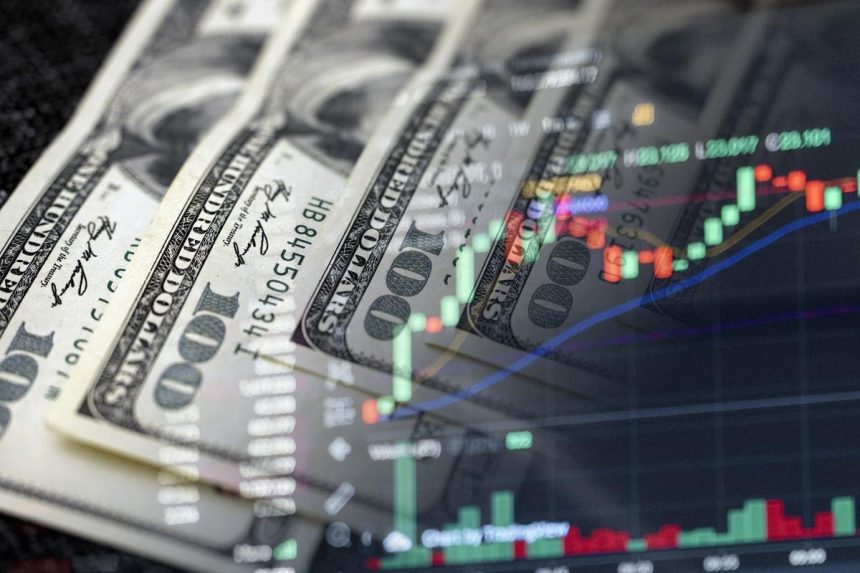Caleb Richter, CEO of MyEListing.com.
While the economic atmosphere of the 1980s was different than what we’re experiencing now, analysts have spotted similarities in the “then and now” after the failures of Signature Bank and, most notably, Silicon Valley Bank.
As a commercial real estate professional of more than 10 years, I’ve dealt with my fair share of banks. The intermediary and tertiary roles banks play in many real estate transactions should never be overlooked or taken for granted, as we’re about to see. Arming yourself with historical knowledge is one of the best ways to protect yourself, your assets and your financial future, and this is especially true in the cyclical, heavily bank-reliant realm of commercial real estate.
Let’s look at what led to banking failures in the 1980s and just this year, along with what you can do as a commercial real estate professional to stay protected from future bank failures.
Comparing Silicon Valley Bank To Economics Of The ’80s
Founded in 1983, Silicon Valley Bank’s main customers included tech and life sciences companies. The investment boom of 2020 to 2021 saw their customers raising millions from investors and depositing these funds accordingly. SVB deposits grew to $189 billion in 2021, according to the Financial Times (paywall). This created a base of deposits wherein about 90% were over the Federal Deposit Insurance Corporation’s $250,000 insurance limit, the Washington Post said. When customers began to worry their uninsured deposits were at risk, they began withdrawing billions of dollars worth of deposits, and the bank was quickly seized.
In 1980, the economy was experiencing “stagflation,” a nasty mixture of inflation, high unemployment and stagnant demand. One of President Ronald Reagan’s efforts to boost the economy was the 1981 Economic Recovery Tax Act. This and following acts, such as the Garn-St. Germain Act of 1982, increased the attractiveness of commercial real estate as an investment and fueled a production boom of commercial real estate in the early 1980s, according to a report by the FDIC.
While these new tax changes were initially seen as a positive, I believe the ERTA and other events set up many thrifts—savings and loan institutions (or S&Ls) that primarily offered savings accounts and mortgages—for failure. For instance, newer banking products, like money market accounts, were introduced and difficult to compete with. And, as explained by Fortune, as the Federal Reserve rose interest rates in the ’80s to curb inflation, “the value of the fixed rate assets—mainly mortgages—that were held by the S&Ls declined.” The cost of their funding rose, they had to pay more to attract deposits, and, eventually, S&Ls “started to lose money and become insolvent.” Some S&Ls responded to the loss in revenue by making excessively risky real estate loans. When commercial real estate deflated in the 1980s, many thrifts went under.
The thrift crisis of the 1980s was fueled by a unique combination of inflation and the accompanying rising rate scenario; new regulations that increased market risk; relaxed lending standards practiced by thrifts as they attempted to increase their shrinking capital; and corruption within the industry itself.
Both the 1980s and current economies struggled with inflation. During both periods of bank failures, the Federal Reserve rose interest rates to help slow inflation. However, the Fed raised rates to about 14% in January 1980, according to Bankrate. This past May, interest rates were at about 5%. The current economic environment is finally seeing the end of the effects of the global Covid-19 pandemic, something that 1980s investors weren’t faced with.
What This Means For The Commerical Real Estate Space
From my perspective, while this year’s U.S. bank failures weren’t spurred by tax incentives, both 1980s and current failures had several things in common. Remember that, as a depositor, it’s important to know how your money is used and protected. Read your bank’s quarterly and annual reports, watch the stock price and learn about its risk-management strategies. Is your bank buying treasuries? What does the current yield curve look like? Staying protected means staying informed.
Additionally, commercial real estate investors can consider diversifying capital allocations. As the saying goes, “Never put all your eggs in one basket.” I believe the same is true for CRE banking. It takes time to convert wealth on paper to cash, and diversifying could help protect some of your wealth in case a bank that holds some of your money becomes insolvent.
Finally, keep tabs on your cash flow forecasts in both the short term and long term, and update both as consistently as you can. Ensure your sources of short-term cash flow can cushion you against any emergency liquidity issues that may arise as a result of current economic indicators. I know it’s easy to get lost in the long-term game when it comes to CRE, but if you do have to pull from some emergency reserves to cover operating expenses, you’ll at least be somewhat prepared to absorb the blow if you take the time beforehand to trim away some excess fat.
To put it simply: Know your finances, know your books and don’t wait until it’s too late.
The information provided here is not investment, tax or financial advice. You should consult with a licensed professional for advice concerning your specific situation.
Forbes Business Council is the foremost growth and networking organization for business owners and leaders. Do I qualify?
Read the full article here


